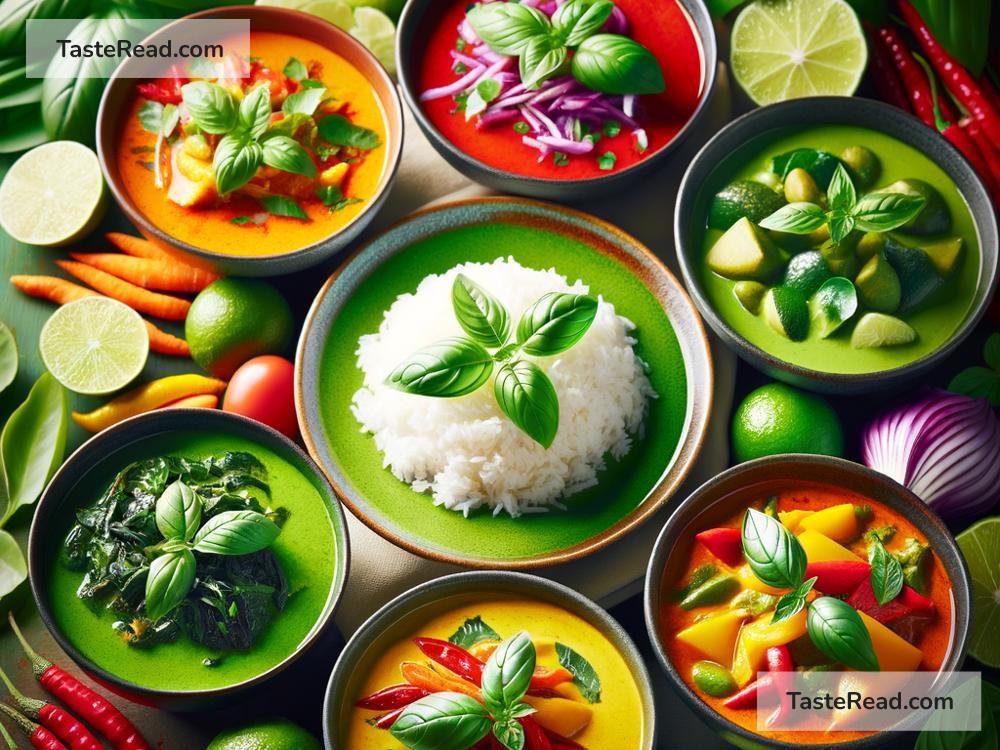Exploring the Flavors of Thai Regional Curries: A Journey Through Thailand’s Culinary Landscape
When you think of Thai food, what comes to mind? For many, it’s the rich, aromatic flavors of Thai curries. These complex dishes are a cornerstone of Thailand’s culinary heritage, each region offering its own unique take on this beloved dish. From the coconut-laden curries of the south to the herbaceous broths of the north, exploring Thai regional curries is like taking a gastronomic tour of the country. So, let’s embark on this flavorful journey together!
Central Thailand: The Balance of Flavors
In the heart of Thailand, Central Thai cuisine exemplifies balance and refinement. The curries here, such as the renowned Green Curry (Gaeng Keow Wan) and Red Curry (Gaeng Phet), are characterized by their rich, creamy texture and a harmony of sweet, salty, sour, and spicy flavors. Central Thailand’s curries often use coconut milk, which adds a delightful creaminess and tames the heat of the chili.
Green Curry, in particular, is a favorite among locals and visitors alike. Made with fresh green chili, coconut milk, bamboo shoots, and typically chicken or beef, it offers a piquant yet sweet flavor that truly represents the culinary artistry of Central Thailand.
Northern Thailand: A Taste of the Mountains
As we move up to Northern Thailand, the curries take on a completely different character. Here, dishes like Khao Soi and Gaeng Hang Lay reflect the region’s mountainous terrain and cooler climate. These curries are less about the coconut milk and more about a rich array of spices and herbs.
Khao Soi is a must-try. This unique curry features egg noodles in a curry broth, topped with crispy noodles, pickled mustard greens, shallots, lime, and ground chilies fried in oil. It’s a textural and flavor masterpiece, combining soft and crunchy textures with a spicy, slightly sweet broth.
Gaeng Hang Lay, another Northern specialty, is a Burmese-influenced pork curry known for its deep, complex flavor profile that includes tamarind, ginger, and a mix of Burmese and Thai spices. This hearty dish is a testament to the cultural melting pot that is Northern Thailand.
Northeastern Thailand (Isaan): The Rustic Flavors
Venturing into the Northeastern region, Isaan, the curries become even more distinct. This region is famous for its fiery, bold flavors and a preference for meat and fish. Here, you’ll find dishes like Gaeng Om, a spicy and aromatic herb-filled broth typically made with beef or fish.
What makes Isaan curries stand out is their reliance on local herbs and vegetables, giving them a fresh, earthy flavor that’s unlike anywhere else in Thailand. These dishes are usually enjoyed with sticky rice, which perfectly complements their robust flavors.
Southern Thailand: The Land of Spices
As we travel down to the southern part of Thailand, the curries intensify in both heat and flavor. The south is known for its abundant use of spices and a love for all things spicy. Massaman Curry and Panang Curry are two standout dishes from this region.
Massaman Curry, influenced by Persian cuisine, is a rich, coconut-based curry that’s a bit milder than its southern counterparts. It’s filled with spices like cinnamon, cumin, cloves, and nutmeg, offering a sweet and savory taste that’s utterly addicting.
Panang Curry, on the other hand, is thicker and usually sweeter than other Thai curries. It’s made with meat, peanuts, and a variety of spices, resulting in a dish that’s creamy, nutty, and deeply flavorful.
Exploring Thailand Through Its Curries
Thai curries are more than just food; they’re an expression of Thailand’s history, culture, and regional diversity. From the creamy, mild curries of the central region to the spicy, herb-laden dishes of the south, each curry tells a story of its origins.
By exploring the flavors of Thai regional curries, we get a glimpse into the soul of Thai cuisine. Each dish invites us to experience the geographical and cultural landscapes of Thailand, one spoonful at a time. So, next time you have the opportunity to delve into a bowl of Thai curry, remember, you’re not just tasting a dish; you’re savoring a piece of Thailand’s rich culinary tapestry. Bon appétit, or as they say in Thai, “Gin Khao”!


